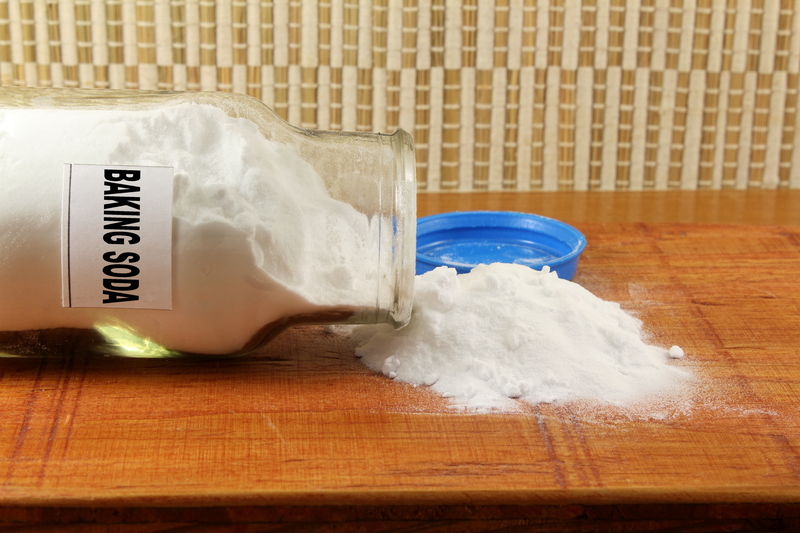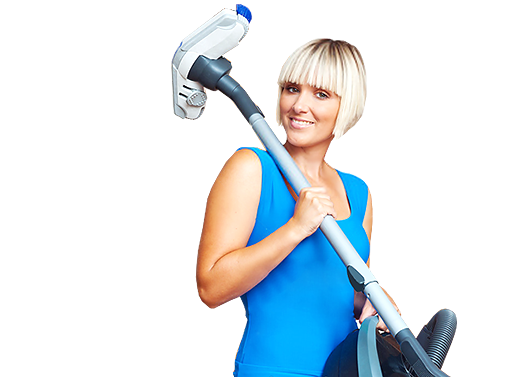Crafting an Allergen-Free Home: Practical Dust Management
Posted on 10/06/2025
Crafting an Allergen-Free Home: Practical Dust Management
Allergens can significantly impact our indoor air quality and overall health, especially for those who suffer from allergies or asthma. Among the most persistent threats to a healthy home is dust - a combination of debris, skin cells, textile fibers, pollen, pet dander, and even microscopic mites. An accumulation of these particles leads to allergic reactions, poor air quality, and discomfort. That's why practical dust management is vital when aiming for an allergen-free home.
This comprehensive article explores actionable strategies, room-by-room solutions, and expert tips for minimizing dust and maximizing health, ensuring your home becomes a safe haven for everyone.
Why is Allergen-Free Living Essential?
Everyday exposure to common indoor allergens can trigger a range of reactions--runny nose, sneezing, itchy eyes, asthma attacks, and even skin irritations. According to the American College of Allergy, Asthma & Immunology (ACAAI), roughly 50 million Americans suffer from allergies each year, much of which is due to exposure within their homes. Dust and dust mites are some of the most common culprits.
By crafting a dust-free environment, you can:
- Reduce health risks for allergy and asthma sufferers
- Improve indoor air quality for everyone
- Promote better sleep and comfort
- Increase the lifespan of household items like carpets, textiles, and electronics
Optimal dust management protects not just your respiratory health but your investment in home and happiness. Let's explore how to turn your home into a stronghold against dust and allergens.

Understanding Household Dust and Common Allergens
What is household dust? Fundamentally, dust is a heterogeneous mix comprising:
- Dead skin cells
- Pet dander
- Textile fibers from clothing, carpets, and upholstery
- Pollen and mold spores entering through windows and doors
- Outdoor air pollutants and soil particles
- Dust mite feces and fragments
- Cockroach debris
Why is dust a problem? Not only is it unsightly, but dust particles serve as a transport medium for many allergens. Of particular concern are dust mites, microscopic creatures whose dying bodies and waste become one of the most prevalent sources of allergenic material in modern homes.
Effective Steps Toward Allergen-Free Living: Practical Dust Management
Maintaining low dust levels requires daily attention, smart cleaning routines, and often a smarter home arrangement. Here are the best practices and dust management strategies to incorporate:
1. Prioritize Frequent and Efficient Cleaning
- Vacuum with a HEPA Filter: Ordinary vacuums tend to kick particles back into the air. Use a vacuum cleaner equipped with a High-Efficiency Particulate Air (HEPA) filter. This traps dust, dander, and even pet allergens. Ideally, vacuum carpets, rugs, and upholstered furniture two to three times a week.
- Mop Hard Floors Regularly: Sweeping can stir up dust; instead, use a damp or microfiber mop. Microfiber traps significantly more dust than cotton or sponge mops, minimizing airborne circulation.
- Dust With Damp Cloths: Avoid dry dusting. A slightly damp microfiber cloth effectively removes dust without dispersing particles into the air.
2. Eliminate Clutter to Minimize Dust Traps
Clutter attracts dust. Shelves crammed with books, knickknacks, and textiles become magnets for dust accumulation. Minimize open shelving and regularly declutter rooms. Store items in closed containers or cabinets to limit exposed surfaces.
3. Choose Allergen-Resistant Furniture and Flooring
- Skip the Carpet: Hard floors (wood, tile, vinyl) harbor less dust and are easier to clean than wall-to-wall carpets.
- Opt for Washable Fabrics: Use slipcovers, pillowcases, and throws that can be easily washed.
- Minimize Upholstered Furniture: Consider leather or vinyl upholstery, which attracts less dust than fabric.
4. Optimize Household Ventilation
- Keep Windows Closed During High-Pollen Seasons: While fresh air is important, during peak pollen times, closed windows help keep external allergens out.
- Use Exhaust Fans: Kitchen and bathroom fans remove moisture and airborne particles that feed mold and dust mites.
- Install an Air Purifier: A HEPA air purifier can capture fine dust and allergenic particles, especially helpful in bedrooms and main living areas.
5. Wash Bedding and Curtains Frequently
- Launder sheets, pillowcases, and blankets at least weekly in hot water (130?F / 54?C) to kill dust mites and remove dust.
- Wash curtains, or choose blinds/shades that can be easily wiped down.
- Place dust-mite-proof covers on mattresses and pillows.
6. Control Indoor Humidity
Dust mites thrive in humid environments. Use a dehumidifier to keep relative humidity below 50%. Regularly empty and clean your dehumidifier to prevent mold growth, which can contribute to allergies.
7. Pet Dander Management
Pets are cherished family members, but they are also significant dust and dander sources. Bathe and brush animals frequently, restrict them from bedrooms, and regularly clean their bedding and toys.
8. Entryway Strategies to Stop Dust at the Door
- Create a "Shoes-Off" Policy: Shoes track in dust, pollen, and other allergens from outdoors. The simple act of removing shoes at the door can dramatically reduce your home's dust load.
- Use Door Mats: Place heavy-duty mats at all entry points and ensure they are cleaned frequently.
Room-by-Room Guide to Dust-Free Living
Living Room
- Limit fabric surfaces; use area rugs over hard floors (vacuum regularly)
- Dust electronics with an electrostatic or microfiber cloth
- Choose washable window treatments
- Regularly vacuum under and behind furniture
Bedroom
- Encasing mattresses and pillows with allergen-proof covers
- Weekly hot water washing of linens
- Replacing heavy drapes with blinds or washable shades
- Decluttering to prevent dust build-up under the bed and on surfaces
Kitchen
- Ventilate and use exhaust fans during cooking
- Regularly wipe down surfaces, especially behind and under appliances
- Store food in airtight containers to deter pests
Bathroom
- Run ventilator fans to reduce humidity and mold risk
- Wash bath linens weekly in hot water
- Use mildew-resistant shower curtains and clean all surfaces regularly
Recommended Tools & Supplies for Allergen-Safe Dust Cleaning
To optimize your dust management, consider these top tools:
- HEPA vacuum cleaner (upright or canister, with appropriate attachments)
- Microfiber dusting cloths and mops
- Hypoallergenic, unscented cleaning agents
- Damp mop for hard surfaces
- Protective mattress and pillow covers
- Air purifier with a true HEPA filter
- Dehumidifier (for basements and high-humidity homes)
Special Considerations for Allergy Sufferers
- Wear masks and gloves when cleaning to minimize dust exposure
- Schedule cleaning chores while allergy sufferers are away when possible
- Use closed storage bins rather than open baskets or shelving
- Immediately wash or shower after cleaning high-dust areas
- If allergies persist, consult a medical professional about immunotherapy or special filters
Smart Home Upgrades for an Allergen-Free Environment
Modern technology can boost your home's automatic defenses against dust and allergens:
- Smart air purifiers: Many models can monitor air quality in real time and adjust filtration automatically.
- Robotic vacuums with HEPA filters: These devices can maintain daily dust control even when you're not home.
- Smart thermostats: Maintain optimal temperature and humidity for dust mite control.
- Whole-house ventilation systems: Continuously filter and supply fresh, clean air.
Debunking Common Myths About Dust Allergies
- "Air fresheners reduce dust." Not true: Most air fresheners only mask odors and may add volatile organic compounds (VOCs) to your air.
- "Cleaning less often prevents stirring up dust." False: Frequent, gentle, and correct cleaning actually removes dust rather than recirculates it.
- "Pets with short hair don't cause allergies." Incorrect: All pets produce dander, the true allergen source.
- "You can be completely dust-free." Unlikely: The goal is practical dust management--a significant reduction, not full elimination.

Establishing a Long-Term Allergen Management Routine
Consistency is key. Schedule dust-management tasks throughout the week and involve all household members. Use calendars, reminders, or home management apps to stay organized.
- Assign specific tasks (dusting, vacuuming, washing linens) to different days of the week
- Keep cleaning supplies easily accessible to encourage quick touch-ups
- Review and adjust routines seasonally, increasing efforts in allergy or pollen season
Conclusion: Your Blueprint for an Allergen-Safe, Dust-Free Home
Practical dust management isn't about achieving flawless perfection but about making your home allergy-friendly and comfortable. Through consistent cleaning, smart choices in materials, smart technology, and heightened awareness, you'll reap the rewards of fresher air, better health, and a truly welcoming space.
Whether you begin by taking your shoes off indoors, investing in a HEPA vacuum, or establishing a weekly routine, each step is progress toward an allergen-free sanctuary.
Remember: The ultimate reward for vigilant dust management is not just a cleaner house, but an environment where you and your loved ones can thrive, breathe easy, and enjoy true peace of mind--all year round.





